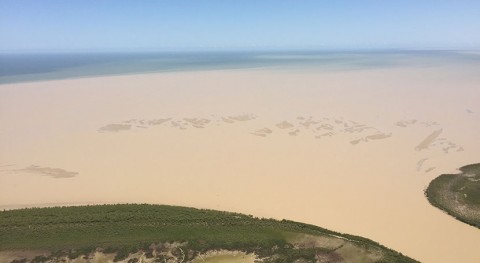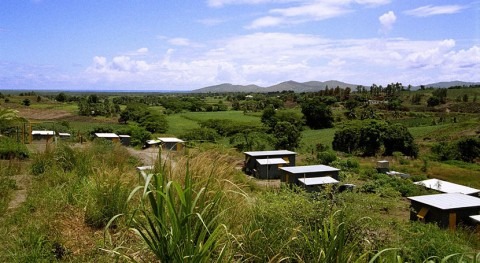Griffith-led research has revealed that both the decreases in wind and the higher temperatures predicted with climate change can cause bigger algal blooms in the future.
Published in Water Research, the study found that a 20% decrease in wind speed will result in algal blooms of the freshwater cyanobacteria Microcystis that are almost one and a half times the current size.
"The impact this decrease in wind will have on algal blooms is more than six times that of a 2°C increase in air temperature associated with climate change," said lead author Mohammad Hassan Ranjbar, a Ph.D. candidate at the Australian Rivers Institute.
"Harmful algal blooms of the freshwater cyanobacteria Microcystis are a global problem and are expected to intensify with climate change, however, to date the impact of atmospheric stilling, the decrease in near-surface wind speed, has not been considered."
"Our research is the first to demonstrate that atmospheric stilling along with increasing air temperature can favor blooms of these buoyant, colony-forming cyanobacteria."
Co-author Professor David Hamilton, Acting Director of the Australian Rivers Institute, said that this research shows that "wind speed needs to be included in any projections looking at changes in the frequency, distribution and magnitude of algal blooms under climate change."
Our research is the first to demonstrate that atmospheric stilling along with increasing air temperature can favor blooms of these buoyant, colony-forming cyanobacteria
"The decreases in wind speed, which have been forecast to occur in several regions across the globe with climate warming, reduces mixing in the water column in lakes and other bodies of water. The reduced turbulence in the water column allows buoyant cyanobacteria to float to the surface and form blooms."
To test if wind stilling affected the distribution and biomass of cyanobacteria in the water column the researchers applied a novel individual-based model which they combined with a hydrodynamic model to simulate the movement of water in the lake.
"For the first time our model was able to show the algal colony size change dramatically in response to the turbulence, light, temperature, and nutrients in the water column of a shallow urban lake," Mr Mohammad Hassan said.
"Using this model, it was clearly evident that the formation of algal blooms was far more sensitive to the atmospheric slowing of wind speed associated with climate change than it was to warming temperatures."
The authors stress that this atmospheric stilling should be included in predictions of algal blooms under climate change.















